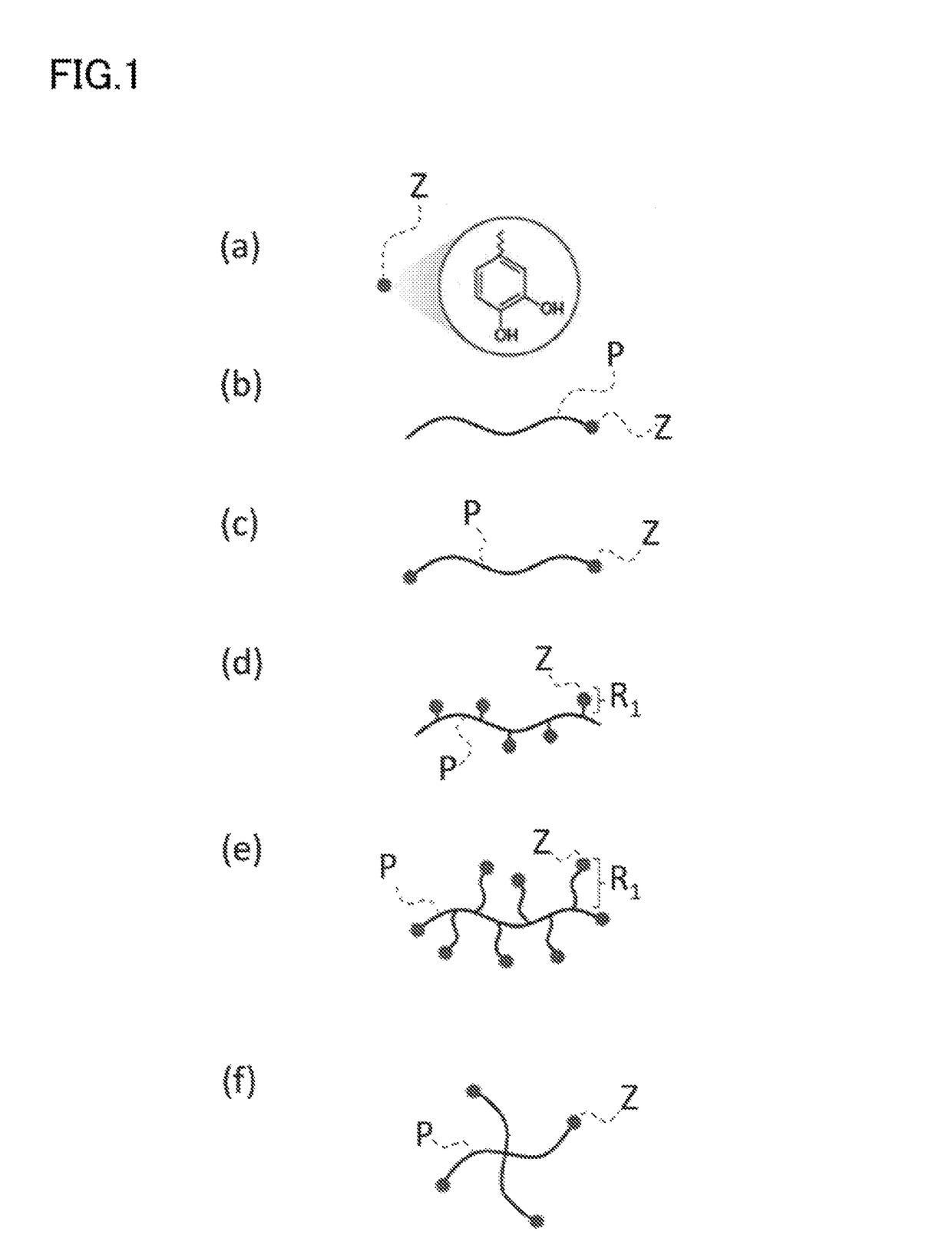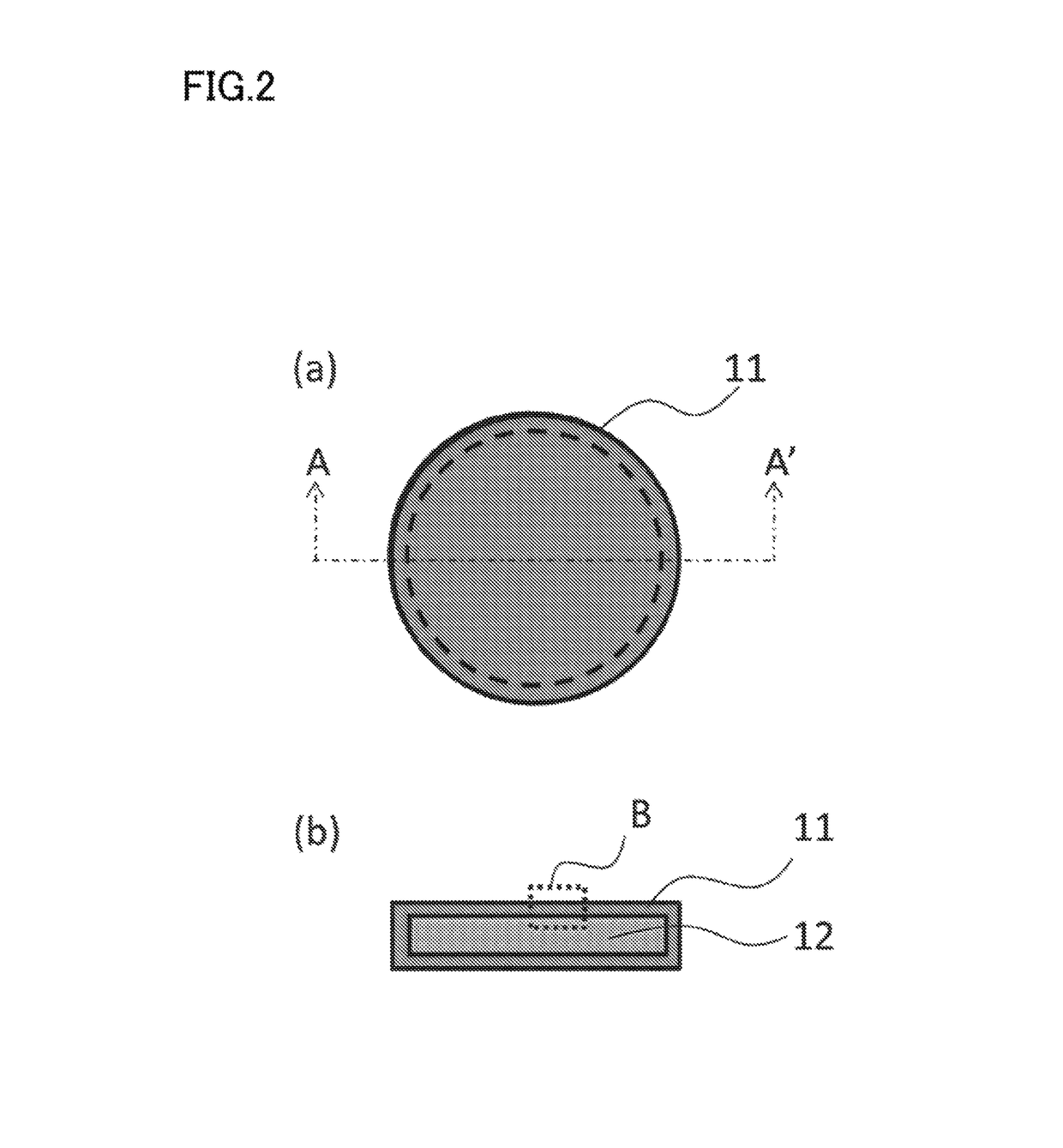Nano-coating material, method for manufacturing same, coating agent, functional material, and method for manufacturing same
a technology of nano-coating and functional materials, applied in the direction of electrochemical generators, cell components, coatings, etc., can solve the problems of difficult to produce a stable passivation film, difficult to apply stable passivation film, and oxidative deterioration reaction becomes particularly problematic, etc., to achieve high yield, easy application, uniform and smooth
- Summary
- Abstract
- Description
- Claims
- Application Information
AI Technical Summary
Benefits of technology
Problems solved by technology
Method used
Image
Examples
example 1
[0222](Material Preparation and Evaluation of Characteristics)
[0223]As illustrated in the following chemical reaction scheme (9), material (DOMA1) as a first raw material monomer and material (methyl methacrylate) as a second raw material monomer were mixed at a feed ratio (x:y) of (1:2.5), and then, the mixture was dispersed in DMF together with AIBN as a radical initiator to produce a monomer-dispersed solution. Subsequently, while the monomer-dispersed solution was stirred at 75° C. for 40 hours, the monomer-dispersed solution was subjected to a free radical polymerization reaction. The AIBN concentration in DMF was adjusted to 1.5 mol %.
[0224]
[0225]Next, a poor solvent (acetone) was added to the monomer-dispersed solution to cause reprecipitation, and thereby, a product in a white powder form (sample of Example 1) was obtained.
[0226]FIG. 5 is an optical photograph of the sample of Example 1 (indicated as DOMA-C1).
[0227]Next, a 1H NMR analysis was conducted. According to a calcul...
example 2
[0228]A sample of Example 2 was produced in the same manner as in the case of the sample of Example 1, except that the feed ratio was set to 1:5.
[0229]Next, a 1H NMR analysis was conducted. FIG. 6 is a graph illustrating the results of a 1H NMR analysis of the sample of Example 2. For the sample of Example 2, a molecular structure exhibiting the positions of 1H corresponding to the NMR peaks is also disclosed. The ratio m:n for the sample of Example 2, was 1:7.
example 3
[0230]A sample of Example 3 was produced in the same manner as in the case of the sample of Example 1, except that the feed ratio (x:y) was set to 1:10.
[0231]Next, a 1H NMR analysis was conducted. FIG. 7 is a graph illustrating the results of a 1H NMR analysis of the sample of Example 3. For the sample of Example 3, a molecular structure exhibiting the positions of 1H corresponding to the NMR peaks is also disclosed. The ratio m:n for the sample of Example 3 was 1:14.
PUM
| Property | Measurement | Unit |
|---|---|---|
| thickness | aaaaa | aaaaa |
| thickness | aaaaa | aaaaa |
| static water contact angle | aaaaa | aaaaa |
Abstract
Description
Claims
Application Information
 Login to View More
Login to View More - R&D
- Intellectual Property
- Life Sciences
- Materials
- Tech Scout
- Unparalleled Data Quality
- Higher Quality Content
- 60% Fewer Hallucinations
Browse by: Latest US Patents, China's latest patents, Technical Efficacy Thesaurus, Application Domain, Technology Topic, Popular Technical Reports.
© 2025 PatSnap. All rights reserved.Legal|Privacy policy|Modern Slavery Act Transparency Statement|Sitemap|About US| Contact US: help@patsnap.com



